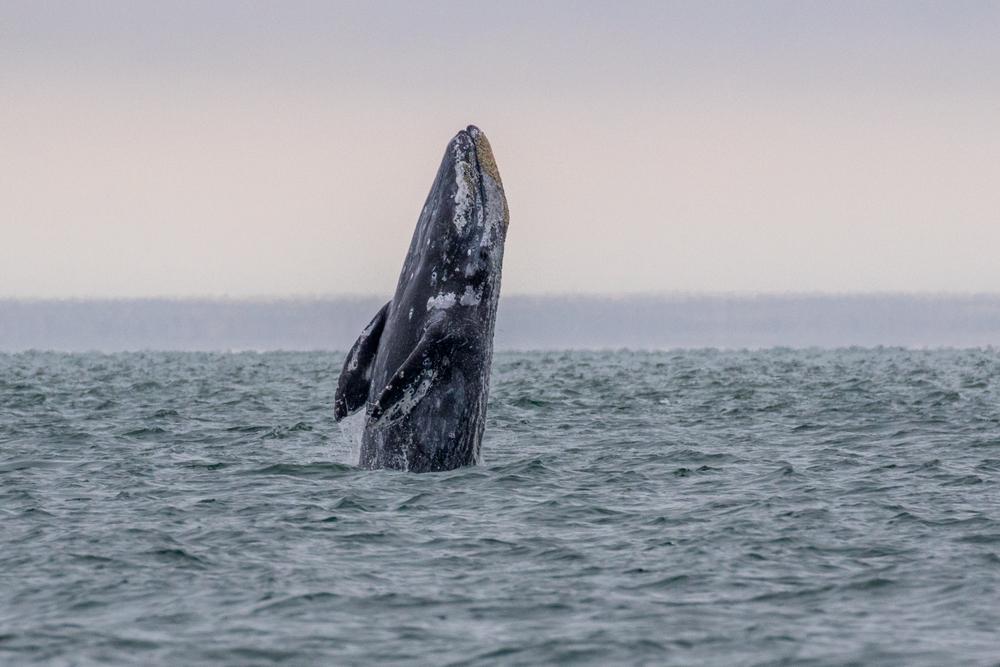The Quick Facts
- Females get up to 15.3m long, Males up to 14.6m long
- Mottled grey in colour (hence the name)
- Have a V shaped head
- Their blow is variable in shape: low and bushy, tall and narrow, sometimes even V-shaped and sometimes it looks like a heart
- Used to be known as “Devil Fish” by whalers
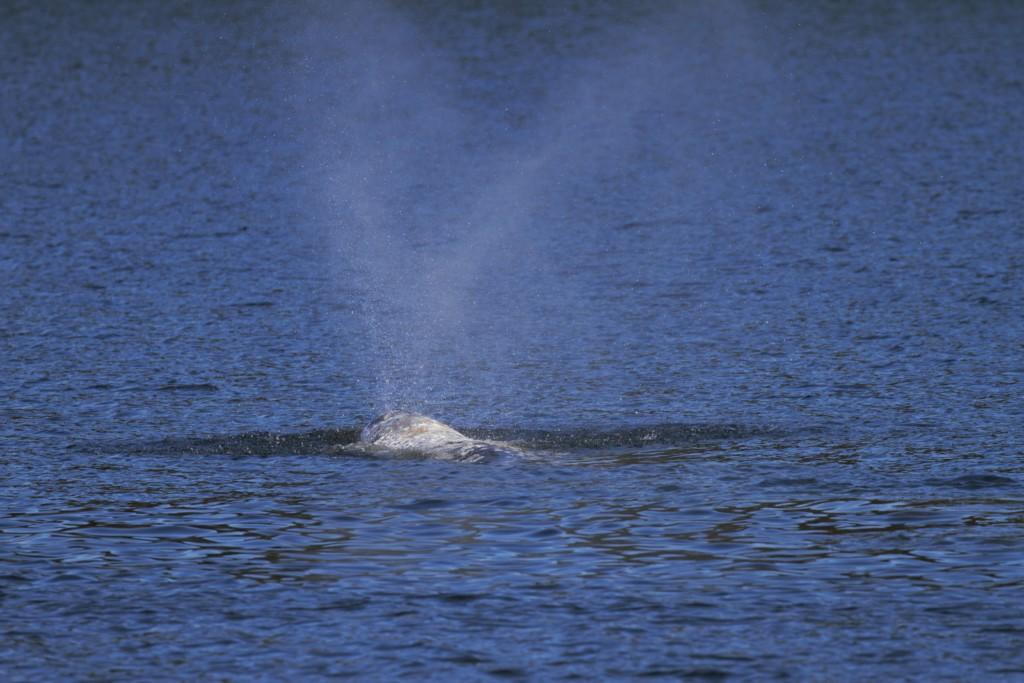
Who Are These Creatures?
First off the bat: What is the difference between a Grey whale and a Gray whale? Nothing! It just depends where you come from.
Canadians spell it ‘grey’ while American’s spell it ‘gray’ but trust us, it’s all the same animal.
Grey whales are found only in the North Pacific Ocean and are the longest migratory mammals. Travelling up to approximately 20,000 km (12427.424 miles), that’s about the same distance as walking the Great Wall of China two and a half times! Their round trip takes them from their winter breeding lagoons in Baja California and summer feeding grounds in the Bering, Chukchi and Beaufort Seas, north of Alaska.
These whales use the BC coastal waters as a highway for migration. When heading south they travel through these waters between November to January. When migrating north, Grey whales appear off the island from late February through to April. We see a peak in migration during the last two weeks of March
Devil Fish? Where Are Its Horns Then?
During the 19th century, whalers would hunt these mammals in their breeding lagoons. They were given such a name because of their aggressiveness when adults were harpooned or when their calves were threatened.
Grey whale mothers will actively defend their calves from mammal hunting Killer Whales (like Transient Killer Whales) which will target the young during northbound migrations. The mother will roll and trash at the surface as well as strike out at attackers with her tail flukes.
To try and avoid such a scenario, mothers and young will hug the shorelines as much as possible following the lines of bays instead of swimming from point to point. To keep with this low profile the Grey whale will breath by just raising its blowhole clear or the water and breathing very quietly. This action is known as ‘snorkeling’.
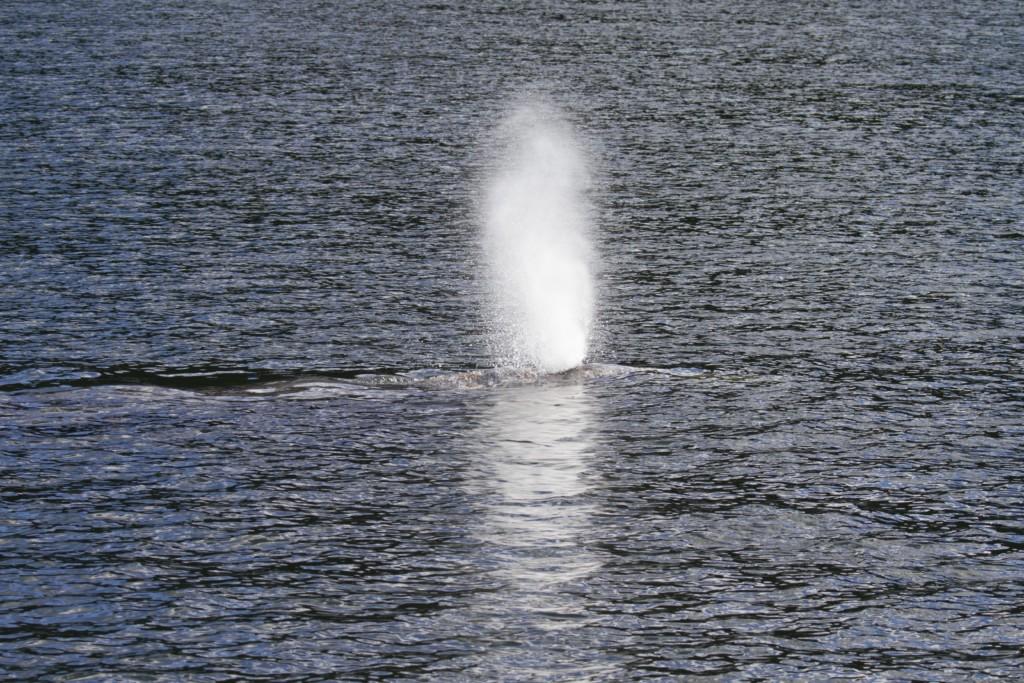
Body Features
This whale has knuckles- but not in the way you think. Grey whales don’t have a dorsal fin. Instead there is a hump located about two-thirds of the way down the animals back from the head, this hump is followed by 6-12 smaller “knuckles”.
Ventral pleats numbering between two and seven cover the throat area to help expansion and increase mouth volume during feeding.
Skip this next one if you get squeamish easily…
Grey whales more often than not have yellow, orange or white patches on their body, particularly concentrated near the head. These form due to an infestation of barnacles or whale lice… BLAH!!!
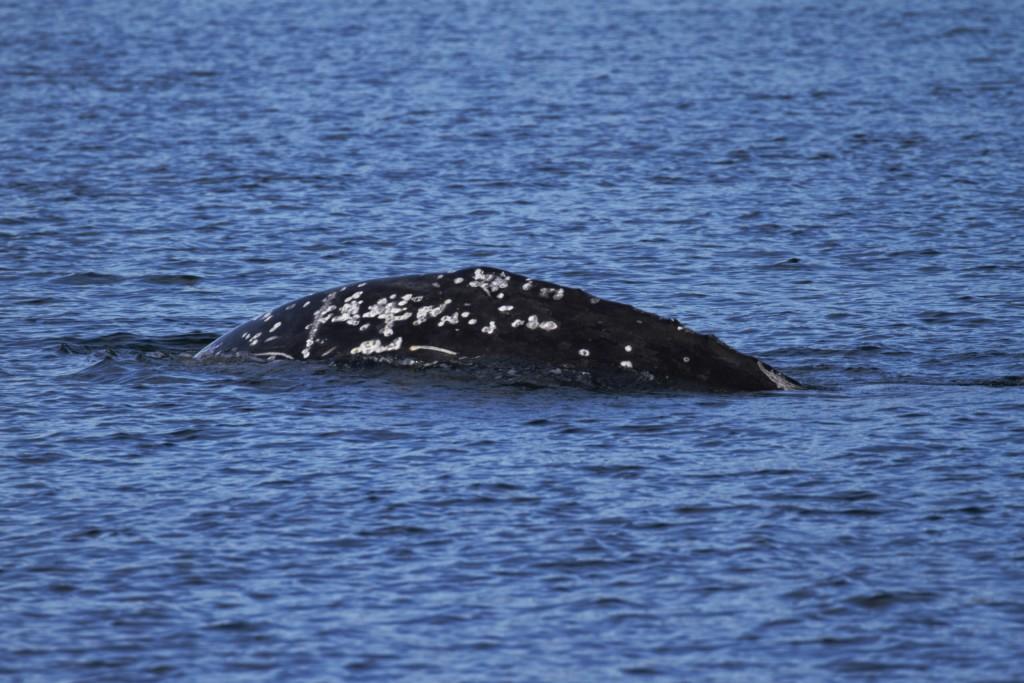
Will We Find Them Topping Whale Music Charts?
Probably not, no.
Greys are relatively quiet whales especially while on migration and in feeding ground- less singing more eating perhaps?
However, when they do produce sound it is at a very low frequency and presents itself as a rapid series of sharp knocking sounds that have a metallic characteristic. Such sounds are heard at breeding grounds or during social activities.
Feeding Habits
Unlike most other baleen whales, Grey whales are almost exclusively bottom feeders. The bottom of the ocean floor is full of a variety of benthic and epibenthic invertebrates. This feeding method disturbs the sediment of the sea flood and leaves mud plumes behind which can be seen from the waters surface.
Behavior such as this will leave scarring on the head and will also damage the baleen in the whale’s mouth as it is used. With these damage markers, we can actually determine if a whale is right or left-handed as they will solely use one side!!
Another hunting strategy that has been observed in key sites such as, Hesquiat Harbour, Vancouver Island, is the eating of Pacific Herring eggs. The eggs are laid in vast quantities in eel grass or algae, so it is an easy take for the whales.
Grey whales will also swim mouth open, through balls of free-swimming zooplankton near the water surface.
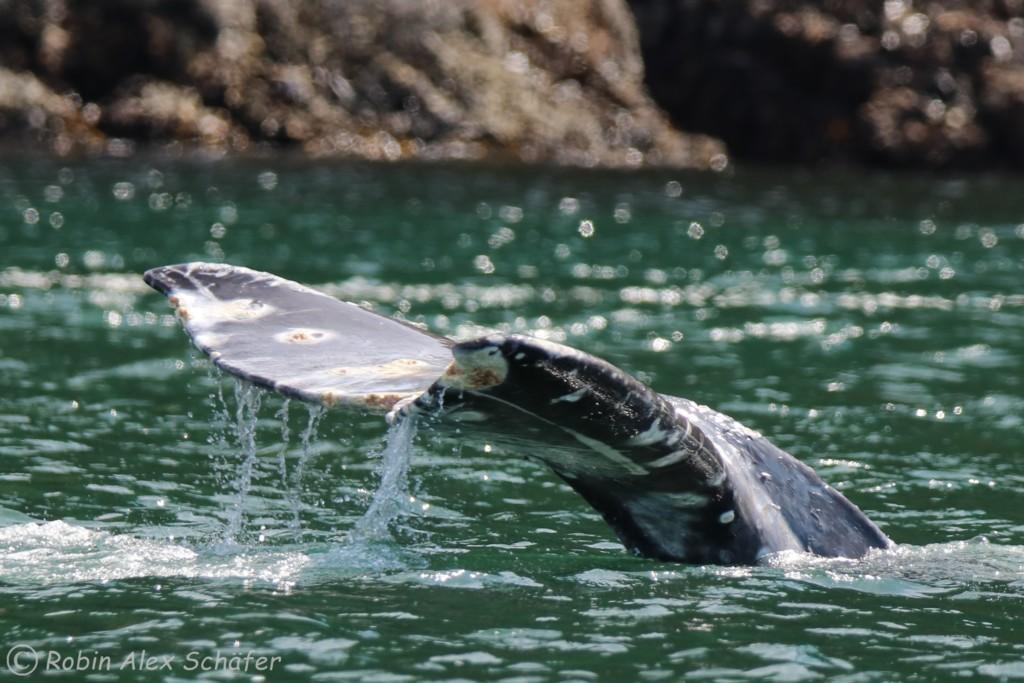
Whale Then….
If there was a whale award for “Mother of the year” I’m pretty sure the Grey whale would be a top contender. Fighting off a pod of killer whales is no easy feat- trust me I’ve seen them in action! But to protect yourself and a little one at the same time!! You go Grey whale mums.
They would definitely beat British Olympic runner Mo Farah at a long distance race… can you even imagine swimming 20000km and hardly eating anything along the way? I don’t know about you but I can hardly go 2 hours without munching on something.
Izzy David
Onboard Naturalist/Biologist for SpringTide Whale Watching & Eco Tours
Read More Latest News, Latest Articles

